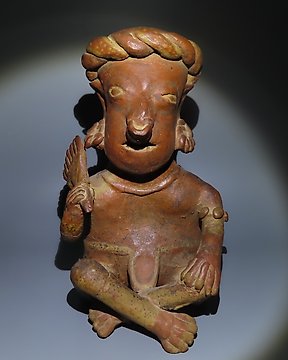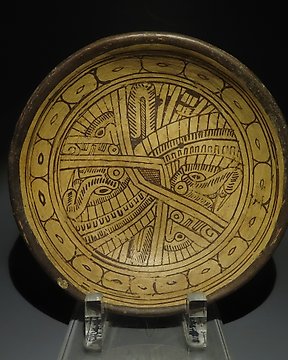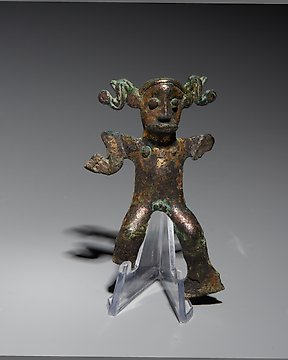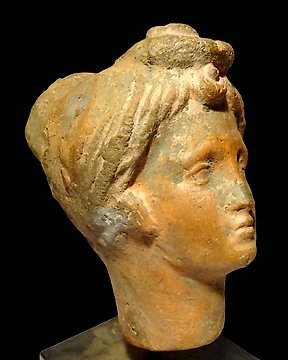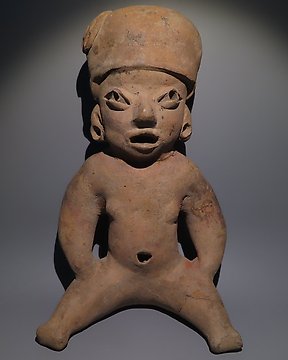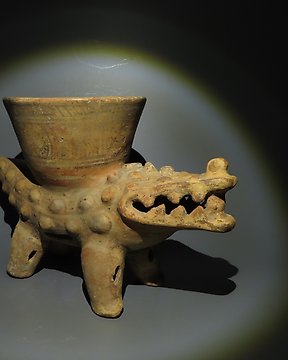
哥斯大黎加 Terracotta 鱷魚形狀的碗。西元 1000-1200 年。 32.5 公分。 L. 擁有西班牙進口許可證。
Catawiki正在不斷更新其技術。 您目前正在使用過時的瀏覽器。 為了優化您的瀏覽體驗,請更新您的瀏覽器。
您可以使用以下切換按鈕設置Cookie偏好設定。您可以隨時更新您的偏好,撤銷同意,並在我們的Cookie政策中查看我們和我們的合作夥伴使用的Cookie類型詳情。
編號 83777021
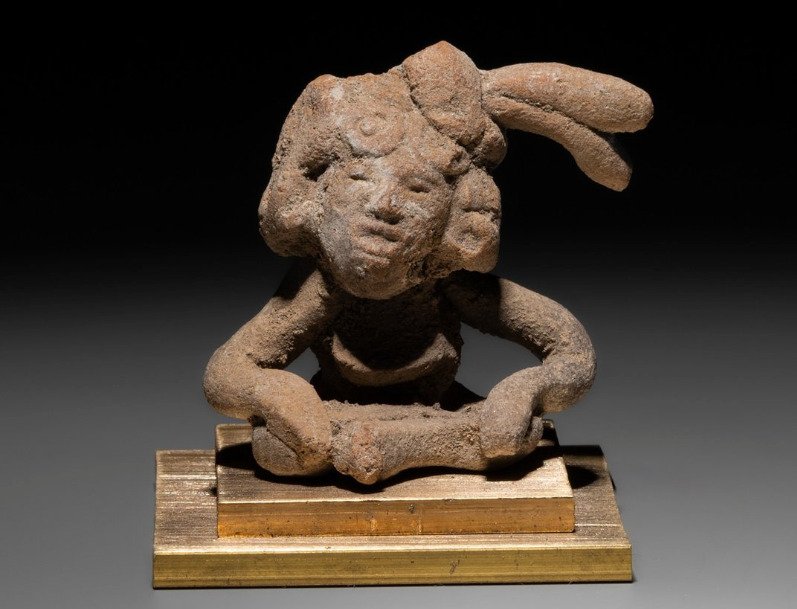
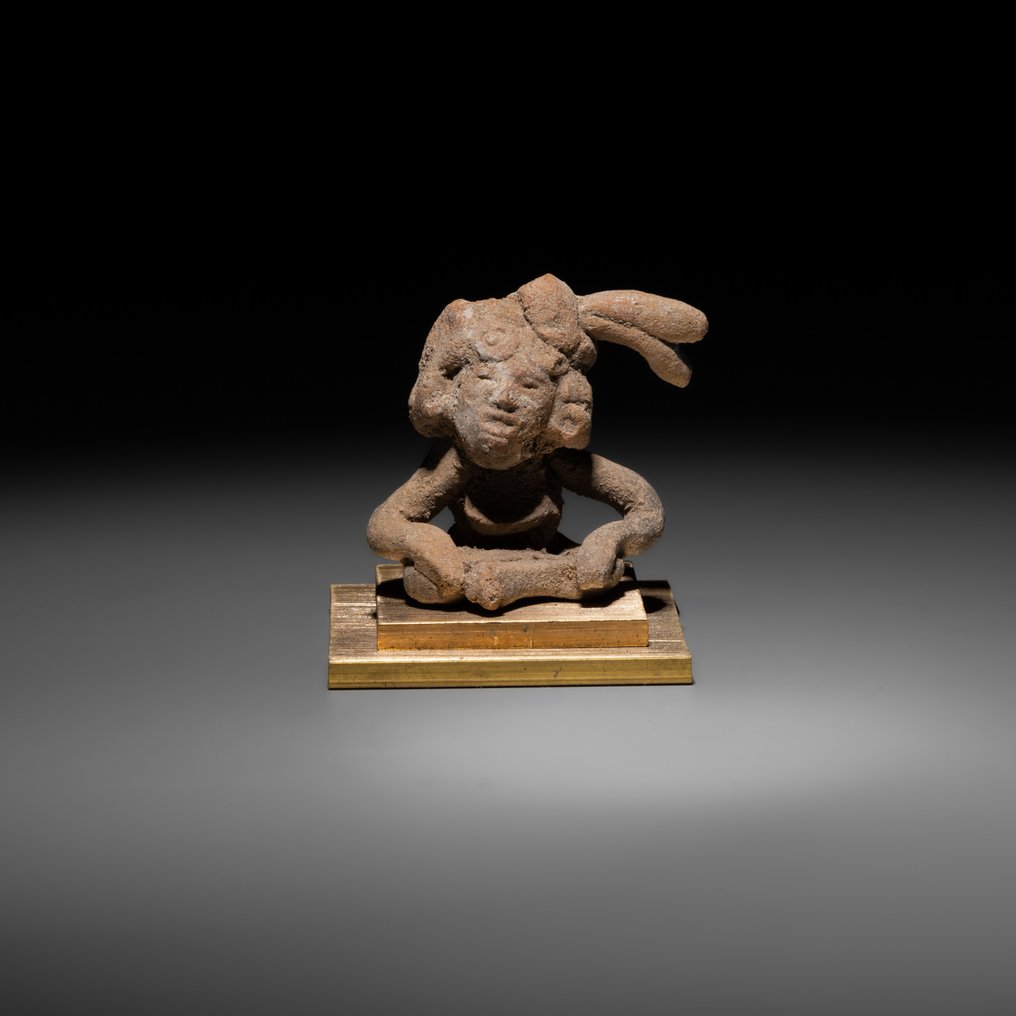

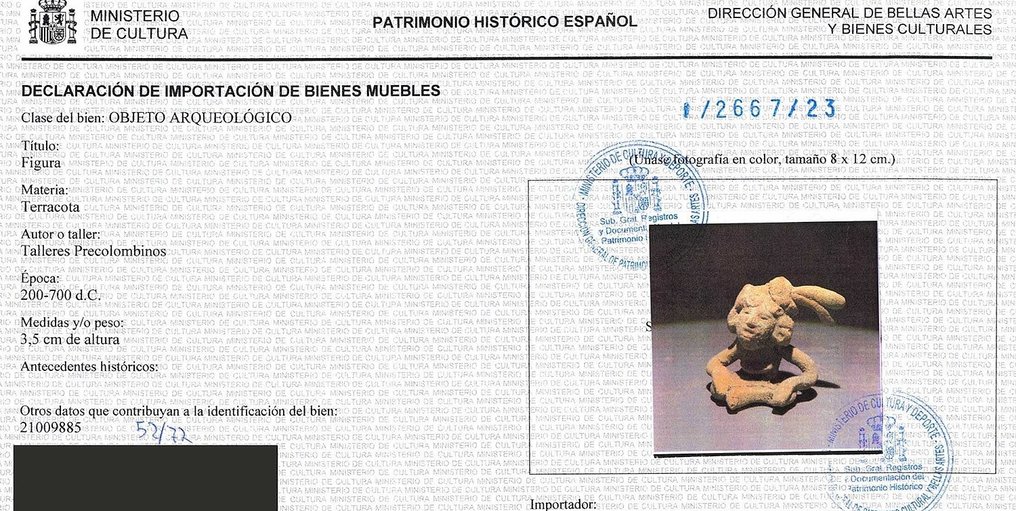
Figure.
- Thermoluminiscence Test -
- Nice Quality! -
Teotihuacan, Mexico, Classic Period, 200 - 700 AD.
Terracotta
3.5 cm height.
PROVENANCE: Private collection, Dijon, France.
CONDITION: Good condition. No restorations.
BIBLIOGRAPHY:
- BERLO, J.C. (ed.). Art, Ideology, and the City of Teotihuacan. Dumbarton Oaks. 1992.
- BERRIN, K.; PASZTORY, E. (eds.). Teotihuacan: Art from the City of the Gods. Thames & Hudson. 1993.
- SCOTT, S. The Corpus of Terracotta Figurines from Sigvald Linne’s Excavations at Teotihuacan, Mexico (1932 & 1934-35). Ethnographical Museum of Sweden. 2001.
PARALLELS:
Fig. 1 Statuette of a seated figure. Teotihuacán, Mexico, 400-700 AD. Terracotta. Museo de América, Madrid, inv. 1985/01/133.
Fig. 2 Head. Teotihuacán, Mexico, 300-650 AD. Terracotta. Museum of Avila, Spain, inv. A/70/9.
Fig. 3 Articulated statuette. Teotihuacán, Mexico, AD 400-600. Terracotta. Los Angeles County Museum of Art (USA), inv. AC1996.146.47.
DESCRIPTION:
Terracotta statuette representing a seated, cross-legged figure, with his body leaning slightly forward, his face raised towards the viewer and slightly turned, and his arms resting on his legs. He wears a thick necklace that falls over his chest, circular earrings and a headdress topped by a large side plume, which could indicate that this is a representation of a priest or a deity.
Teotihuacán was one of the largest cities in Mesoamerica during the Classic Period (ca. AD 200-600), a political, economic and religious centre with a multi-ethnic population of up to 100,000 inhabitants. It was located in the Central Highlands, within the Valley of Mexico, and its flourishing dates from approximately 150 BC to 700 AD. Its name means 'place where men become gods', as it was here that the teutl, the deified heroes, were buried.
Teotihuacán was a landmark in the millennia-long history of Mesoamerica; it was imposing in its scale and political and cultural importance, but also in its rigorous planning around religious buildings and the rites and ceremonies associated with them. Our current knowledge of the city is, however, limited; it has not been fully excavated, and many aspects of its culture have come down to us only through Aztec sources, unreliable because of their probable mythical and political motivations. It is therefore impossible to be sure that Teotihuacán directly controlled a territory, although its cultural and religious influence is evident in contemporary cities such as Tikal in Guatemala and Monte Albán in Oaxaca.
The end of the great city came around the year 700, after a period of political instability, internal social conflicts and climatic changes that affected the whole of northern Mesoamerica. Nevertheless, its ruins were a destination for explorers even before the Spanish conquest; Teotihuacán artefacts have been found at Toltec and Mexica sites to attest to this, and Postclassic Mexica mythology includes Teotihuacán as the setting for such fundamental myths as the legend of the Suns.
Teotihuacan terracotta statuettes are one of the most interesting artistic manifestations of what was the first of the great Mesoamerican cities. While their Zapotec and Mayan neighbours left portraits of their leaders and written chronicles, in Teotihuacan there are no historical representations within the ceremonial art, but an infinity of small figures and heads have been preserved which constitute an enormous source of information about the life and beliefs of the city's inhabitants. Intended for private worship and produced from an early date, these small terracottas evolved into increasingly dynamic and naturalistic forms; although they follow a general canon, they have innumerable variants that constitute a very rich iconography that has not yet been fully studied to this day. Some of the recurring features are the hybridisation of human and animal features, the repetition of certain clothing and ornaments suggesting affiliation to a particular social group, and even morphological details that could represent specific individuals.
Made by hand, moulded or a combination of both techniques, many of these statuettes are characterised by the schematic representation of the anatomy, which suggests that they may have originally been dressed (fig. 1). The faces of both the statuettes and the heads (fig. 2), on the other hand, show a greater level of detail. Many statuettes with articulated arms and legs have also been found (fig. 3), possibly also originally clothed. The abundance and variety of these pieces suggests the existence of a certain craft industry developed around the ceremonial centre of Teotihuacán, which must have exported its production beyond the city's territory, judging by the evidence from sites throughout Mesoamerica.
Notes:
- The piece includes authenticity certificate.
- The piece includes Spanish Export License.
- The seller guarantees that he acquired this piece according to all national and international laws related to the ownership of cultural property. Provenance statement seen by Catawiki.
Figure.
- Thermoluminiscence Test -
- Nice Quality! -
Teotihuacan, Mexico, Classic Period, 200 - 700 AD.
Terracotta
3.5 cm height.
PROVENANCE: Private collection, Dijon, France.
CONDITION: Good condition. No restorations.
BIBLIOGRAPHY:
- BERLO, J.C. (ed.). Art, Ideology, and the City of Teotihuacan. Dumbarton Oaks. 1992.
- BERRIN, K.; PASZTORY, E. (eds.). Teotihuacan: Art from the City of the Gods. Thames & Hudson. 1993.
- SCOTT, S. The Corpus of Terracotta Figurines from Sigvald Linne’s Excavations at Teotihuacan, Mexico (1932 & 1934-35). Ethnographical Museum of Sweden. 2001.
PARALLELS:
Fig. 1 Statuette of a seated figure. Teotihuacán, Mexico, 400-700 AD. Terracotta. Museo de América, Madrid, inv. 1985/01/133.
Fig. 2 Head. Teotihuacán, Mexico, 300-650 AD. Terracotta. Museum of Avila, Spain, inv. A/70/9.
Fig. 3 Articulated statuette. Teotihuacán, Mexico, AD 400-600. Terracotta. Los Angeles County Museum of Art (USA), inv. AC1996.146.47.
DESCRIPTION:
Terracotta statuette representing a seated, cross-legged figure, with his body leaning slightly forward, his face raised towards the viewer and slightly turned, and his arms resting on his legs. He wears a thick necklace that falls over his chest, circular earrings and a headdress topped by a large side plume, which could indicate that this is a representation of a priest or a deity.
Teotihuacán was one of the largest cities in Mesoamerica during the Classic Period (ca. AD 200-600), a political, economic and religious centre with a multi-ethnic population of up to 100,000 inhabitants. It was located in the Central Highlands, within the Valley of Mexico, and its flourishing dates from approximately 150 BC to 700 AD. Its name means 'place where men become gods', as it was here that the teutl, the deified heroes, were buried.
Teotihuacán was a landmark in the millennia-long history of Mesoamerica; it was imposing in its scale and political and cultural importance, but also in its rigorous planning around religious buildings and the rites and ceremonies associated with them. Our current knowledge of the city is, however, limited; it has not been fully excavated, and many aspects of its culture have come down to us only through Aztec sources, unreliable because of their probable mythical and political motivations. It is therefore impossible to be sure that Teotihuacán directly controlled a territory, although its cultural and religious influence is evident in contemporary cities such as Tikal in Guatemala and Monte Albán in Oaxaca.
The end of the great city came around the year 700, after a period of political instability, internal social conflicts and climatic changes that affected the whole of northern Mesoamerica. Nevertheless, its ruins were a destination for explorers even before the Spanish conquest; Teotihuacán artefacts have been found at Toltec and Mexica sites to attest to this, and Postclassic Mexica mythology includes Teotihuacán as the setting for such fundamental myths as the legend of the Suns.
Teotihuacan terracotta statuettes are one of the most interesting artistic manifestations of what was the first of the great Mesoamerican cities. While their Zapotec and Mayan neighbours left portraits of their leaders and written chronicles, in Teotihuacan there are no historical representations within the ceremonial art, but an infinity of small figures and heads have been preserved which constitute an enormous source of information about the life and beliefs of the city's inhabitants. Intended for private worship and produced from an early date, these small terracottas evolved into increasingly dynamic and naturalistic forms; although they follow a general canon, they have innumerable variants that constitute a very rich iconography that has not yet been fully studied to this day. Some of the recurring features are the hybridisation of human and animal features, the repetition of certain clothing and ornaments suggesting affiliation to a particular social group, and even morphological details that could represent specific individuals.
Made by hand, moulded or a combination of both techniques, many of these statuettes are characterised by the schematic representation of the anatomy, which suggests that they may have originally been dressed (fig. 1). The faces of both the statuettes and the heads (fig. 2), on the other hand, show a greater level of detail. Many statuettes with articulated arms and legs have also been found (fig. 3), possibly also originally clothed. The abundance and variety of these pieces suggests the existence of a certain craft industry developed around the ceremonial centre of Teotihuacán, which must have exported its production beyond the city's territory, judging by the evidence from sites throughout Mesoamerica.
Notes:
- The piece includes authenticity certificate.
- The piece includes Spanish Export License.
- The seller guarantees that he acquired this piece according to all national and international laws related to the ownership of cultural property. Provenance statement seen by Catawiki.




